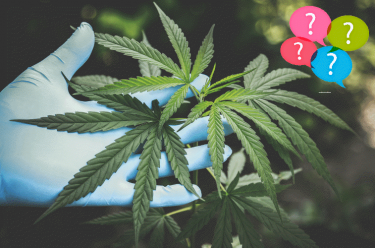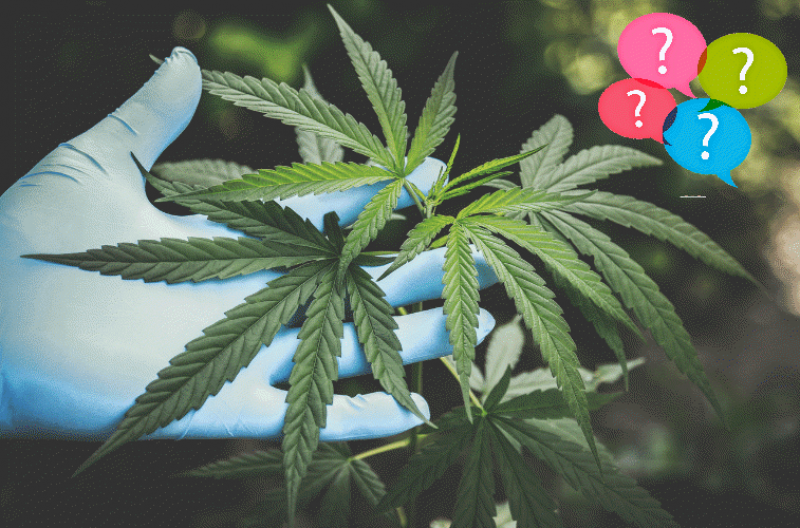What Types of Cannabis Seeds Go with What Type of Crops?

There are many types of seeds, which fulfill many functions and their usefulness is wide, both in the planting of crops, as in the kitchen or in the processing industry.
Among the different existing seeds, some have a hard outer shell and a more flexible and permeable material inside, another variety can even be edible without processing, also other characteristics may vary a lot from one seed to another.
Among the different types of seeds that we can find, we will name some that we consider of greater importance, due to their performance and quality when processing the finished product to the buyer, such as: Creole seeds, hybrid seeds, feminized seeds, improved seeds, seeds of vegetables, flower seeds, fruit seeds, among others.
What Seeds for What Crops?
Now, we will refer particularly to the use and characteristics of the seeds that are usually used mostly in different areas in agricultural and vegetable production.
Feminized seeds: Used in cannabis cultivation, due to its high yield and quality in the product it originates, it has been a great find that has made life easier for many cannabis growers. Feminized seeds are seeds whose genetics, by hormonal modification, allow only female plants to flourish.
They are highly demanded since their advantage lies in ensuring that the crops will always be from the same family, preserving purity and quality.
Improved seeds: The main characteristic of improved seeds is that they are a type of seeds chosen with the help of man, with controlled pollination techniques and processes, used mainly for crops such as corn. Among the properties of these types of seeds are: high resistance to diseases and pests, high production, fast-growing and easy adaptation to all types of regions.
Hybrid Seeds: It is, as its name indicates, the crossing of pure varieties. Among its characteristics we can highlight its uniformity, rapid growth, roots and stems with better resistance and more robust and finally a higher quality fruit.
These seeds have many advantages, such as the fact that they can grow fruits optimally in all kinds of weather conditions, be they hot, cold, dry environments, etc. In addition, the number of fruits and seeds is higher with this variety, a high resistance to pests and diseases is obtained, maintaining the yield and the uniformity of the fruits.
Seeds for vegetables: Their characteristics and types vary greatly in relation to size, color, texture, as well as the way each one germinates. Their resemblance in common, basically refers to the requirement of water in its growth, so that the seed develops properly and has an optimal preparation for the production of the crop.
Among the uses of them are lentils, corn, peanuts, cumin, chickpea, coriander, among others. Stem vegetables: the most common are onion, potato, radish, ginger. etc. Root vegetables: carrot, yucca, turnip, radish and more.
Flower seeds: There is a great diversity in the seeds for flowers, in color, texture, sizes, with tones ranging from black to beige. Some differ, for example, from vegetables because they usually are smaller in size. The seeds of flowering plants have cotyledons (specialized leaves for the storage of reserve substances, useful for the embryo in germination).
Creole Seeds: By definition, the term “Creole” comes from the Spanish “Criollo” which means native. Therefore, this concept refers to a typology of seeds that adapt to the environment thanks to a process of natural or manual selection. Among the many benefits that this type of seed offers, is avoiding the depletion of the land where they are sown, with a return to the traditional cultivation methods of many ancient cultures, where it is possible to obtain new seeds during sowing.
Creole seeds are the seeds cared for and improved under the dominion of traditional communities. With great wisdom, peasants in different parts of the world resist the technological package of agrochemicals (chemical and agro-toxic fertilizers) and transgenic seeds.
Baby Seeds: It is a seed characterized by the fact that its grains are tender without having reached their maturity, the principle of its use is that being very young and tender, they have a greater resistance in relation to mature seeds. Baby seeds are much smaller and using small dab containers are great for transporting them, as well as making sure you don't lose them.
They present a great advantage, since they are fresh and strong seeds that can exceed in these variables, already mature seeds. Baby seeds are able to offer resistance to diseases, therefore, these seeds guarantee a healthy crop rich in nutrients. It is important that the seed can only be used once, this means that no fertile seeds will be generated in the future harvest.
Benefits of Improved Seeds for World Food Production
The requirements of food and other products for use and consumption of people are greater every day in view of the accelerated increase in the world population, this has caused improvements to be sought through new technologies and scientific studies that achieve improvement and optimization in the performance and production of supplies that are increasingly demanded day by day.
Human beings, since ancient times, have selected the strongest and most resistant plants for their crops. Corn, for example, would not exist as we know it if man had not separated the most robust varieties over the years.
And this has been achieved over the years and has been applied to all types of seeds. They are the way for plants to last generation after generation and improve their performance.
They also serve to find new sites and microenvironments, depending on the conditions of their production.
Conclusions
The future challenge of humanity is that we need to find a balance between producing more food and maintaining the planet for future generations.
In this sense, the research and strategies that have been outlined in recent years, in trying to make better use of the resources we have to supply the demand for food and other consumer items for the common people.
It is desirable that these new technologies, especially related to food cultivation, crop yields, greater profitability for producers and use of water, are available worldwide, since in the face of these undeniable and unthinkable advances a few years ago.







